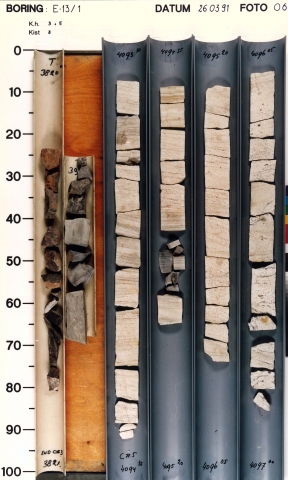Alternation of stacked, sheet-like, amalgamated channel fill sandstone bodies, mudstone intervals and coal seams. Sandstone intervals show thicknesses of 3 to 25 m, with an average around 10 m. On logs they commonly display a bell shape. The sand is cream to pink, fine- to very coarse-grained, locally conglomeratic and/or carbonaceous, rounded to subangular, well- to poorly-sorted and well-cemented. Sandy mudstone intercalations can reach 25 m in thickness, and locally account for 50% or more of the bulk volume. Coal seams can constitute up to 5% of the member.
Poorly to moderately-drained fluvial-plain with short-term marine incursions. Sandstones: braided fluvial channel systems, entering the basin from the north. Individual channels frequently amalgamated into sheets. Some fluvial systems were structurally confined, resulting in stacked sandbodies. This system was intermittently replaced by poorly-drained flood-plain, swamp or lacustrine systems.
Placed at the base of the lowermost thick sandstone bed of the sandstone-dominated interval. This bed truncates the uppermost clear coarsening-upward cycle.
The transition into the overlying Maurits Formation is marked by the abrupt transition of thick-bedded (pebbly) sandstones into a thick succession of dark-coloured mudstones with abundant coal seams.
